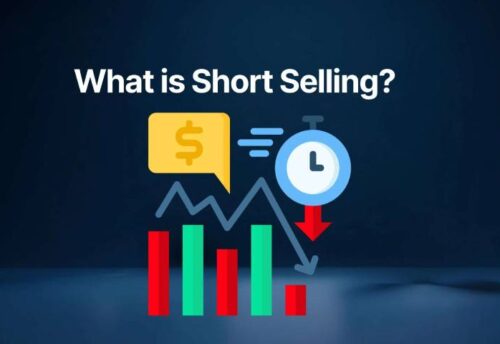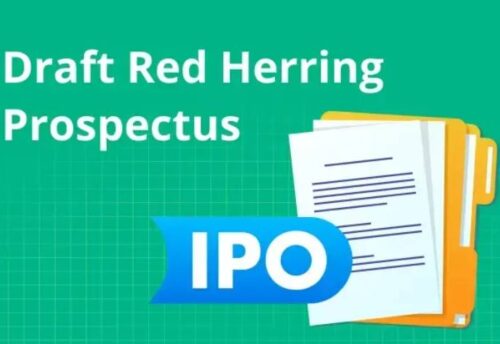
- 23/09/2025
- MyFinanceGyan
- 513 Views
- 5 Likes
- Finance, Investment
High-Yield Corporate Bonds: A Complete Guide
High-yield corporate bonds, often referred to as “junk bonds,” are among the most fascinating yet complex instruments in financial markets. While they carry higher risks compared to investment-grade bonds, they also offer investors the potential for superior returns. For those seeking to diversify their portfolios or boost income, understanding how high-yield bonds work is essential. This guide provides a detailed look into what high-yield bonds are, their characteristics, risks, benefits, and how investors can effectively incorporate them into portfolios.
What Are High-Yield Corporate Bonds?
High-yield corporate bonds are debt instruments issued by companies with lower credit ratings. Because these issuers pose a greater risk of default, they compensate investors by offering higher interest rates compared to government or investment-grade corporate bonds. Simply put, investors lend money to the issuing corporation, and in return, they receive regular interest payments (coupons) along with repayment of principal at maturity. Although the term “junk bond” is often used, it can be misleading — many of these securities play a legitimate role in income generation and portfolio diversification.
Credit Ratings and Classifications:
The main distinction between high-yield and investment-grade bonds lies in credit ratings assigned by agencies such as:
- Standard & Poor’s / Fitch: Below BBB-
- Moody’s: Below Baa3
These ratings reflect an issuer’s ability to meet its obligations. Bonds below the above thresholds are considered high-yield.
Subcategories of High-Yield Bonds
- Fallen Angels: Once investment-grade bonds that have been downgraded due to weakening credit quality.
- Rising Stars: Still classified as high-yield but showing improving fundamentals, moving closer to investment grade.
Key Characteristics of High-Yield Bonds:
High-yield corporate bonds stand out due to several features:
- Higher Yields: They offer substantially higher coupons to offset higher credit risk.
- Unsecured Debt: Often not backed by collateral, meaning lower recovery in case of default.
- Fixed Interest Payments: Provide steady income throughout the term.
- Fewer Covenants: Issuers enjoy greater flexibility with fewer restrictions.
- Lower Correlation with Other Assets: They are less sensitive to interest rate movements than investment-grade bonds, making them useful for diversification.
Who Issues High-Yield Bonds?
High-yield bonds are commonly issued by:
- Startups and emerging companies with limited track records.
- Capital-intensive businesses with high debt requirements.
- Highly leveraged firms carrying significant debt relative to equity.
- Financially distressed companies seeking access to funding.
- Smaller firms without the stability to achieve investment-grade status.
Benefits of High-Yield Corporate Bonds:
High-yield bonds can play a valuable role in portfolios due to:
- Enhanced Income: Higher interest rates provide attractive returns, especially in low-rate environments.
- Diversification: Their performance often differs from equities and traditional bonds, reducing overall portfolio volatility.
- Capital Appreciation: If an issuer’s financials improve, its bonds may be upgraded, boosting bond prices.
- Equity-Like Returns with Lower Volatility: Historically, high-yield bonds have delivered returns close to equities but with less volatility.
- Inflation Protection: Higher coupon payments can help offset inflation’s impact on purchasing power.
Risks Associated with High-Yield Bonds:
Despite their benefits, investors must be cautious of:
- Default Risk: The biggest concern, as issuers may fail to meet payment obligations.
- Interest Rate Risk: Prices may decline as interest rates rise, though less than investment-grade bonds.
- Liquidity Risk: Selling may be difficult without accepting discounts, especially in stressed markets.
- Economic Sensitivity: During downturns, default rates typically rise, pressuring prices.
- Volatility Risk: Greater price fluctuations compared to safer bonds.
High-Yield vs. Investment-Grade Bonds:
How to Invest in High-Yield Bonds:
Investors can gain exposure in several ways:
- Direct Purchase: Buying bonds from broker-dealers (requires strong research).
- Mutual Funds: Professionally managed funds offering diversification.
- ETFs: Exchange-traded funds providing liquidity and cost efficiency.
Funds provide the added advantage of professional credit analysis and broader exposure.
Portfolio Strategies and Considerations:
When adding high-yield bonds to a portfolio, investors should consider:
- Asset Allocation: Typically, 5–15% of a diversified portfolio, depending on risk tolerance.
- Risk Management: Diversify across industries and issuers to reduce concentration risk.
- Credit Analysis: Review company fundamentals, including cash flow, debt levels, and industry standing.
- Market Timing: They perform best in economic expansions when defaults are low.
Market Dynamics Influencing High-Yield Bonds:
Several macroeconomic factors shape performance:
- Economic Cycles: Strong economies improve default rates and boost prices.
- Interest Rate Trends: Rising rates pressure prices but impact is softened by shorter durations.
- Credit Spreads: Wider spreads signal higher perceived risk, while narrower spreads show improving confidence.
- Investor Sentiment: “Risk-on” phases favor high-yield bonds, while “risk-off” periods see outflows.
Due Diligence Checklist:
Successful investing in high-yield bonds requires:
- Financial Statement Review: Focus on debt coverage, cash flow, and profitability.
- Industry Analysis: Assess sector-specific risks and growth potential.
- Covenant Examination: Understand protections (or lack thereof) in bond terms.
- Management Quality: Evaluate leadership’s ability to navigate risks and improve credit standing.
Conclusion:
High-yield corporate bonds are a double-edged sword — they provide the potential for attractive income and capital appreciation but come with higher risks such as defaults, volatility, and liquidity challenges. When approached with careful research, disciplined allocation, and risk management, these bonds can serve as an important tool for income generation and diversification. Investors should align exposure with their financial goals, time horizons, and risk capacity. Professional guidance may also be valuable given the complexity of evaluating credit quality. In today’s evolving market, high-yield bonds remain both an opportunity and a challenge. By understanding their features, benefits, and risks, investors can make informed decisions about including them in their investment strategy.
Note: The views shared in this article are solely educational and intended to raise awareness. This does not constitute financial advice or product recommendations.



